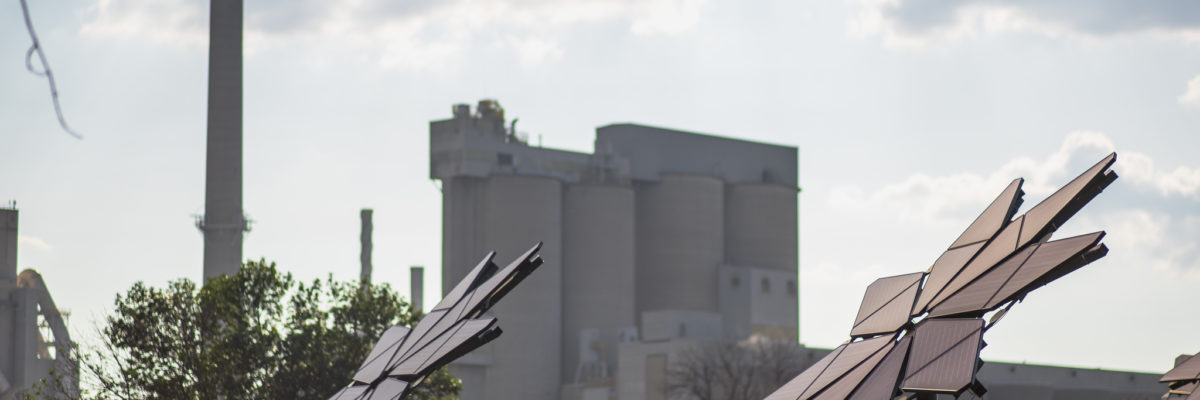Ontario is hitting the reset button on climate policy. With the old plan out and some high-profile cancellation announcements, there is some confusion about which programs and policies are continuing, changing or eliminated, the implications and opportunities, and how and when to provide input and develop new programs.
The new Ontario government has moved quickly over the past three months to cancel numerous climate change policies and programs. In July, 758 renewable energy contracts were cancelled and last month, Bill 34 to repeal the Green Energy Act was tabled. While largely symbolic since there were no more plans to continue the Feed-in-Tariff program, municipalities are being given the ability to block renewable energy projects from their communities, although this does not apply to other types of energy projects.
With renewable power including wind, hydro, solar and storage becoming increasingly affordable and competitive, a clear plan is needed for attracting investment and creating jobs in this sector of the low-carbon economy. Distributed renewable energy is especially important in the Toronto region where electricity supply is constrained and electrification is a key carbon reduction strategy.
Although the Green Energy Act is being repealed, several important elements of the legislation are being kept and transferred over to the Electricity Act. This includes energy efficiency standards for appliances and equipment, as well as energy benchmarking and conservation requirements for publically-owned buildings. Also being retained are the new Energy and Water Reporting and Benchmarking requirements for private sector buildings, which TAF was involved in developing. This landmark program requires large building owners to report their annual energy and water consumption, and is being phased in over 3 years, starting in 2018.
Bill 4 was introduced in September to cancel the Cap and Trade carbon pricing program, which required major emitters and fossil fuel suppliers to reduce emissions while raising $2.9 billion in revenues to support climate action. Dozens of programs funded by the revenues have already been terminated, including incentives for purchasing electric vehicles (EVs), energy retrofit programs for homes, schools, hospitals, social housing, businesses, and industry. This includes all of the programs previously funded by the Green Ontario Fund. However, long-standing energy conservation programs operated by gas and electric utilities, including the majority of Save on Energy programs, have not been affected.
With the termination of generous incentives for EVs, the dramatic growth in Ontario EV sales of recent years is unlikely to be sustained. Attention should be given to a range of approaches to incentivize EV uptake and use of low-carbon electricity instead of fossil fuels for transportation, as well as other ways to reduce transportation-related emissions.
Similarly, with buildings accounting for 26% of Ontario’s carbon emissions (and 50% of cities’ emissions), strategic approaches are needed to reduce energy waste from Ontario’s aging building stock. This will require both public and private investment, and the opportunity is now to ensure that public funds are deployed in a manner that mobilizes private capital in order not to miss out on multiple benefits of retrofits including better air quality and health for residents and tenants, job creation, and hundreds of millions of dollars of savings for building owners.
The new provincial government has committed to developing a new climate plan, although no details are yet available. The litmus test is to have meaningful science-based carbon emission reduction targets and comprehensive strategies to tackle all of the major emissions sources and avert the dangerous effects of climate change.
TAF will continue to focus on advancing climate solutions for cities. Since 29% percent of Ontario’s emissions come from the Greater Toronto and Hamilton Area, solutions that facilitate and help our cities mitigate and respond to climate change are more important than ever. For example, Toronto’s long term goal under the council-approved TransformTO strategy has 75% of energy coming from renewable or low-carbon sources, and 100% of existing buildings retrofitted by 2050. TAF also prioritizes program design that sets the stage for private investment in the low-carbon economy and encourages a thriving energy efficiency sector.
It’s an important time to support strong climate action in Ontario and in our cities. Take the opportunity to get informed (check out the Clean Economy Alliance’s Top 10 Policy Priorities and the Environmental Commissioner’s Office 2018 Greenhouse Gas Report, Climate Action in Ontario: What’s Next?), to comment on the Cap and Trade Cancellation Act on the province’s environmental registry (note October 11th deadline) and to get involved in your local climate action plan.

